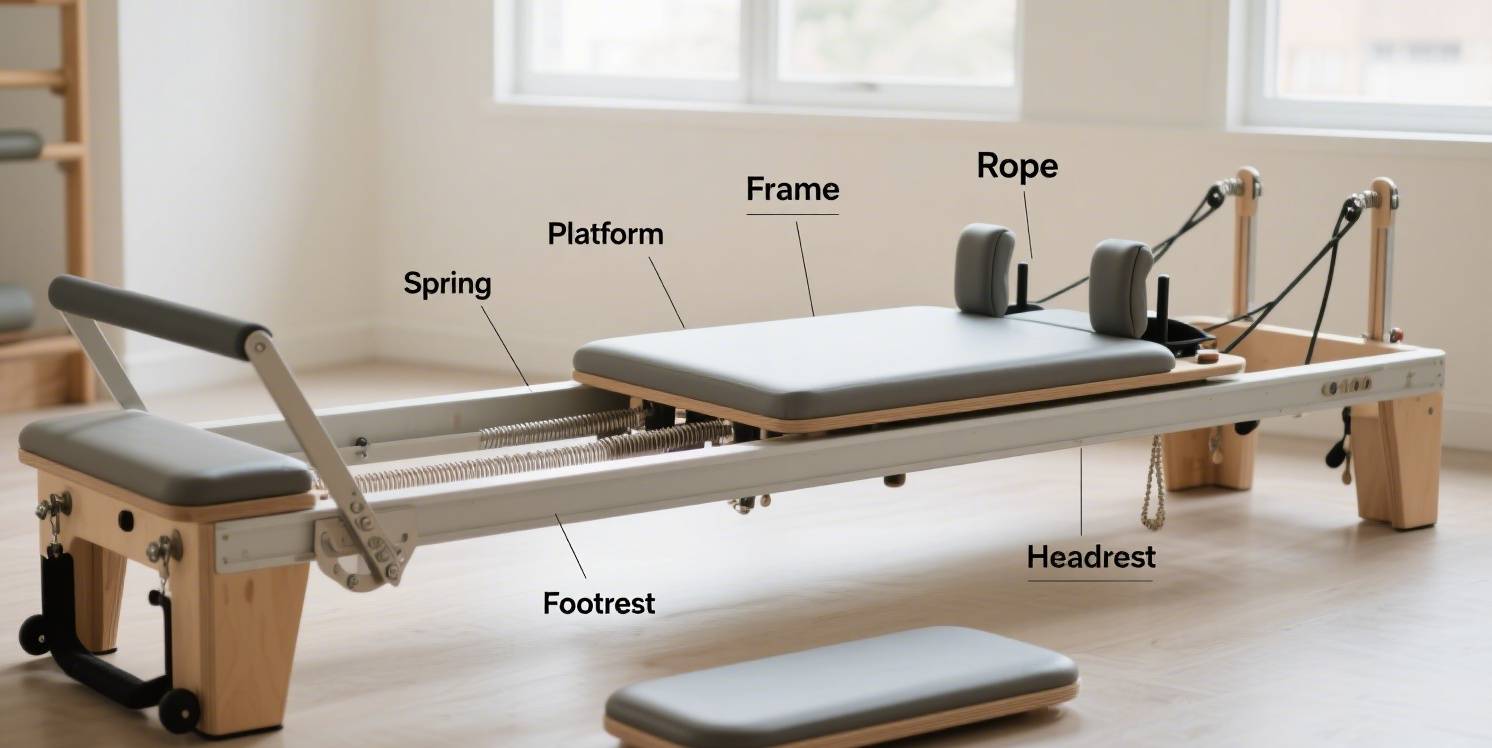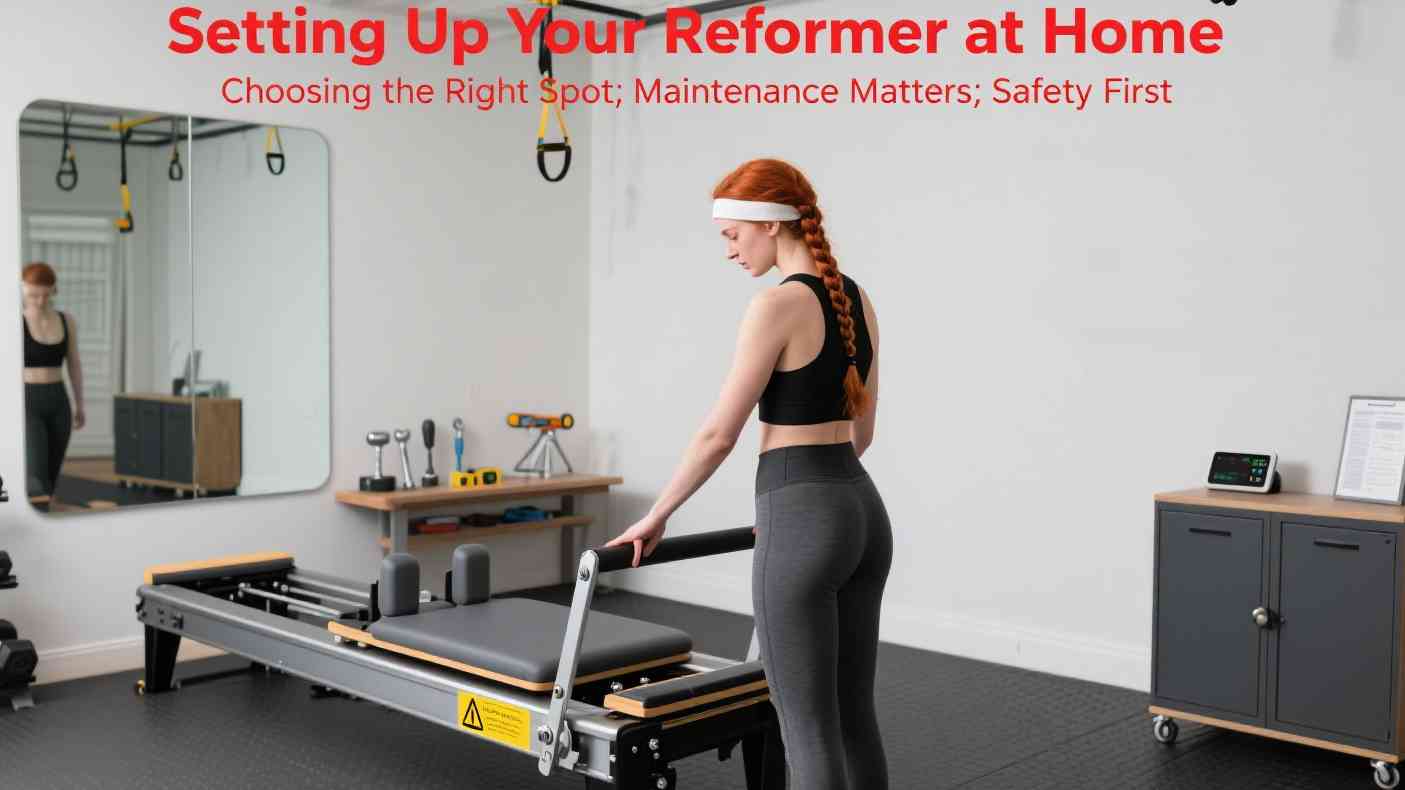As home fitness continues to evolve in 2025, one piece of equipment is rising above the rest: the Pilates Reformer. Far more than just a niche tool, it's becoming a staple in modern home gyms thanks to its versatility, low-impact nature, and ability to deliver full-body results.
✅ Understanding Pilates Reformers: More Than Just a Bed-Like Frame
Designed to enhance flexibility, strength, alignment, and control, the Reformer offers a full-body workout adaptable to all fitness levels. To truly appreciate its impact, we must understand where it came from and how it's constructed.
History and Evolution
The Pilates Reformer was invented by Joseph Pilates, the founder of the Pilates method, in the early 20th century. While interned during World War I, he began experimenting with resistance-based exercises using hospital beds and springs to help rehabilitate injured soldiers. This concept eventually evolved into what we now know as the Reformer.
Over time, Pilates' original wooden design has been reimagined into modern versions using aluminum, steel, and composite materials. Innovations like adjustable spring tensions, padded platforms, rotating shoulder rests, and quiet-glide wheels have made the Reformer more user-friendly and versatile—yet the core concept remains unchanged: resistance-based, alignment-focused movement.
Anatomy of the Reformer

Despite variations in brand and design, every Reformer typically includes the following core components:
- Carriage: The movable platform that glides back and forth on wheels, offering dynamic resistance and support.
- Springs: Usually color-coded, these provide adjustable resistance levels. Users can customize the intensity of each exercise by changing spring combinations.
- Footbar: Positioned at one end, this adjustable bar is used for pushing off or anchoring feet/hands during exercises.
- Shoulder Rests: Help stabilize the upper body and maintain alignment, especially during supine or inverted movements.
- Headrest: Offers comfort and neck support, often adjustable to suit user preferences.
- Straps and Pulleys: Used for arm and leg work, these add range, resistance, and versatility to the movements.
- Frame: The outer base, usually made from wood or metal, that supports the structure.
Understanding these elements empowers users to work more mindfully and safely. When used properly, the Reformer becomes more than a machine—it's an extension of the body that enhances both subtle control and powerful movement.
✅ Why Pilates Reformers Stand Out?
Pilates Reformers have earned their place in both boutique studios and professional rehab centers worldwide. While they may appear simple at first glance, the combination of spring resistance, body alignment, and flowing movement offers something unique that sets them apart from traditional gym equipment. Here's why:
1. Versatility at Its Best
Whether you're a complete beginner, recovering from an injury, or an elite athlete, the Pilates Reformer meets you where you are. Its adaptable design—with adjustable springs, straps, and moving carriage—allows for hundreds of exercises targeting strength, flexibility, balance, and coordination. From lying down to kneeling, standing, or side-lying positions, the Reformer challenges the body from all angles. It supports both gentle rehabilitative work and high-intensity conditioning—all on one machine.
2. Low-Impact yet High-Efficiency Workouts
Reformer Pilates is gentle on the joints but doesn't compromise on results. The controlled, flowing movements, combined with spring resistance, build deep core strength, enhance joint stability, and improve posture without jarring impact. This makes it ideal for people with chronic pain, arthritis, or recovering from surgery. Despite the smooth and graceful appearance, the Reformer delivers a surprisingly intense workout that strengthens and sculpts the entire body.

3. Engaging Full Body
Unlike isolated workouts that target just one muscle group, Reformer Pilates emphasizes whole-body integration. Every movement on the machine recruits stabilizers and mobilizers, working muscles in coordination rather than isolation. You're not just moving your limbs—you're engaging your core, aligning your spine, and controlling your breath. This mindful approach leads to improved movement patterns, better body awareness, and lasting functional fitness.
We are committed to delivering exceptional support and
top-tier service whenever you need it!
✅ Setting Up Your Reformer at Home
Bringing a Pilates Reformer into your home is an excellent investment in your health and well-being. However, to make the most of your equipment, proper setup and care are essential. Here's what you need to know to create a safe, functional, and enjoyable home practice space.
Choosing the Right Spot
Select a dedicated space that allows freedom of movement around the Reformer—ideally, 2–3 feet of clearance on all sides. A flat, non-slip surface like hardwood or rubber flooring is ideal. Avoid carpet if possible, as it may affect stability and make the machine harder to clean.
If you're short on space, consider a foldable or wall-mounted Reformer. Also, ensure the room has good ventilation and lighting to enhance your workout experience. A mirror nearby can help with alignment, and a mat or towel under the Reformer can protect floors.
Maintenance Matters
Regular maintenance ensures your Reformer stays safe, smooth, and quiet. Here are some quick tips:
- Wipe down the carriage, straps, and footbar after each use to remove sweat and dust.
- Check springs for signs of wear or rust and replace them as needed—usually every 1–2 years depending on use.
- Inspect ropes, pulleys, and wheels for fraying, stretching, or sticking.
- Keep moving parts lubricated and tighten any loose screws or bolts monthly.
A well-maintained machine not only lasts longer but also provides a safer and more effective workout.

Safety First
Working out at home means you're in charge of your own safety. Always:
- Start with beginner-level exercises if you're new, ideally under the guidance of online classes or virtual instructors.
- Avoid overloading the springs until you understand proper resistance levels.
- Keep children and pets away from the machine during sessions.
- Use the shoulder rests, headrest, and footbar properly to avoid strain or injury.
- Stop immediately if you feel pain, and consult a certified instructor if unsure about any movement.
Being mindful and prepared allows you to enjoy all the benefits of Reformer Pilates from the comfort of your own space.
✅ Pilates Reformer Exercises to Kickstart Your Routine
Ready to explore the potential of your Pilates Reformer? These foundational exercises are a great place to start, helping you build strength, flexibility, and control from day one.
1. Footwork Series
Focus: Lower body strength, alignment, and core activation
Begin lying on the carriage with your head on the headrest and your feet on the footbar. With the springs set to a moderate resistance, press the carriage out and return in a smooth, controlled motion. Vary foot placement—heels, arches, and toes—to engage different muscles.
Why it's essential: Warms up the legs and glutes, aligns the hips, and introduces core engagement through breath.
2. The Hundred
Focus: Core strength and endurance
Lie on your back, hold the straps in your hands, and extend your legs to tabletop or straight out. With shoulder blades lifted off the carriage, pump your arms up and down while inhaling for 5 counts and exhaling for 5 counts—completing 100 pulses.
Why it's essential: A classic Pilates core exercise that increases circulation and stabilizes your trunk muscles.
3. Short Spine Massage
Focus: Spinal articulation and flexibility
With your feet in the straps, start in a long leg position and roll your spine up and over into a controlled inversion. Bend your knees toward the shoulder blocks and slowly articulate your spine down one vertebra at a time.
Why it's essential: Stretches the spine, strengthens the core, and promotes mindful movement.

4. Lunges on the Reformer
Focus: Leg strength, hip mobility, and balance
Stand on the platform with one foot and place the other foot on the carriage. With the footbar down or out of the way, slide the carriage back to stretch the hip flexors, then engage your glutes to return.
Why it's essential: Builds stability in the legs and pelvis while challenging coordination and flexibility.
5. Mermaid Stretch
Focus: Lateral spine flexibility and breathing
Sit sideways on the Reformer Machine, with legs bent in a Z-sit position. One hand holds the footbar while the other arm reaches overhead. As you push the carriage out, bend laterally to open up the side body, then return.
Why it's essential: Opens up tight sides, improves posture, and resets the nervous system through deep breathing.
✅ Conclusion
Now that you’ve explored the best Pilates reformer machines for various needs, consider which model fits your fitness goals and space requirements. Whether you’re looking for a compact option or a high-tech reformer, there’s a choice that will elevate your Pilates practice.
Ready to take your Pilates practice to the next level? Contact us to choose the reformer that suits you best and start working toward your fitness goals today!

Talk To Our Experts
Connect with an NQ expert to discuss your product needs
and get started on your project.
✅ Frequently Asked Questions
1. What is a Pilates Reformer, and why is it suitable for home gyms?
A Pilates Reformer is a versatile Pilates apparatus featuring a sliding carriage, spring resistance, and pulley system that enables full-body strength, flexibility, and balance training. It is suitable for home use because it is relatively compact, multifunctional, and adaptable for users of all levels—from beginners to advanced practitioners.
2. What are the main benefits of using a Pilates Reformer?
- Full-body workout: Effectively activates core muscles while training arms, legs, and back.
- Improves posture: Strengthens deep muscles that support better alignment and reduce back pain.
- Low impact: Ideal for those with sensitive joints or recovering from injury.
- Highly versatile: Suitable for strength training, stretching, rehabilitation, and toning.
- Space-efficient: Modern designs are compact, perfect for limited home spaces.
3. How does Pilates Reformer differ from traditional Mat Pilates?
Traditional Mat Pilates relies on bodyweight and gravity, while the Reformer uses adjustable spring resistance to make exercises more diverse and effective. The Reformer also assists in maintaining proper movement patterns, reducing injury risk, and challenging stability and coordination.
4. What are the trends for choosing a Pilates Reformer as home equipment in 2025?
Smart technology: Some brands now offer app connectivity and virtual coaching for enhanced interactive training.
Multi-functional designs: Equipment that supports not only Pilates but also yoga, strength training, and more.
Eco-friendly materials: Use of sustainable and environmentally friendly materials aligning with green living.
Inclusive ergonomics: Designs that cater to various body types and age groups.
5. How to choose the right Pilates Reformer for your home gym?
Space size: Measure available space and consider foldable or compact models.
Resistance range: Select spring tension suitable for your strength and training goals.
Material and quality: Opt for durable, comfortable materials like solid wood or aluminum frames.
Accessory support: Check for included items such as shoulder rests, handles, and straps.
Budget: Balance features and brand reputation with your budget to get the best value.
6. What should beginners keep in mind when using a Pilates Reformer?
Professional guidance: Start with certified instructors to learn proper techniques and breathing.
Progress gradually: Avoid rushing into high-resistance exercises; master form first.
Safety check: Ensure equipment stability and inspect springs for wear.
Warm-up and stretch: Always warm up and cool down to prevent injury.
7. Who is the Pilates Reformer suitable for?
Fitness enthusiasts aiming to improve core strength and flexibility
Postpartum recovery or injury rehabilitation patients
Seniors or individuals with joint sensitivity needing low-impact exercise
People of all ages looking to tone and improve posture
8. What are common misconceptions about using a Pilates Reformer?
Over-relying on the machine instead of engaging core muscles actively
Choosing inappropriate spring resistance leading to poor form or injury
Training too frequently without allowing recovery time
Neglecting proper breathing techniques, reducing workout effectiveness
9. How to maintain and care for a home Pilates Reformer?
Regularly inspect springs and sliding parts for wear and tear
Keep the equipment clean to prevent sweat corrosion
Lubricate moving parts as per the user manual
Store in a dry, shaded area to extend its lifespan
Post time: Aug-08-2025
